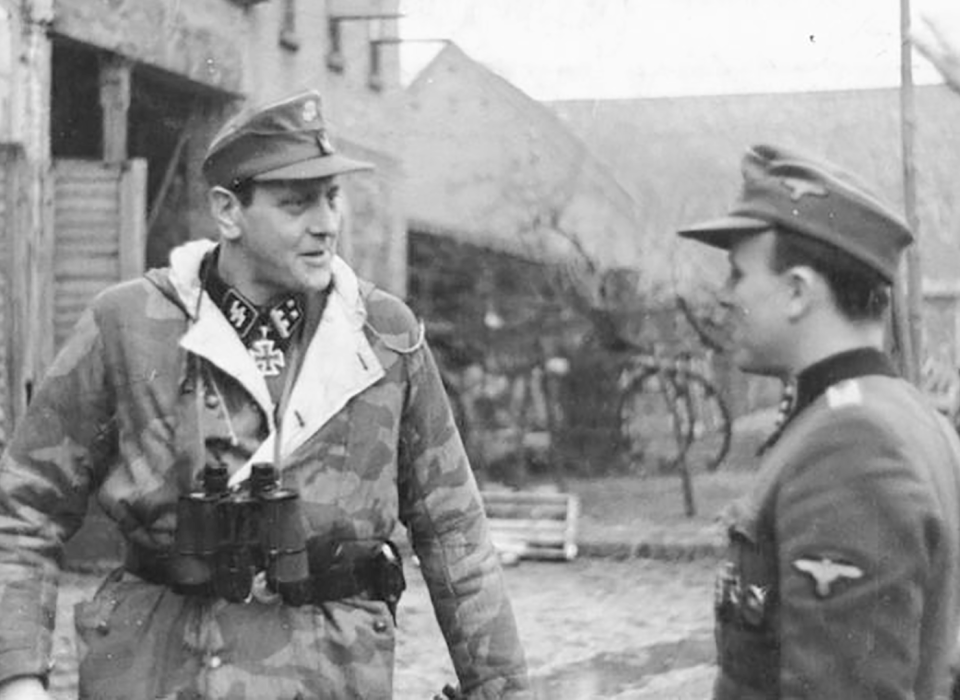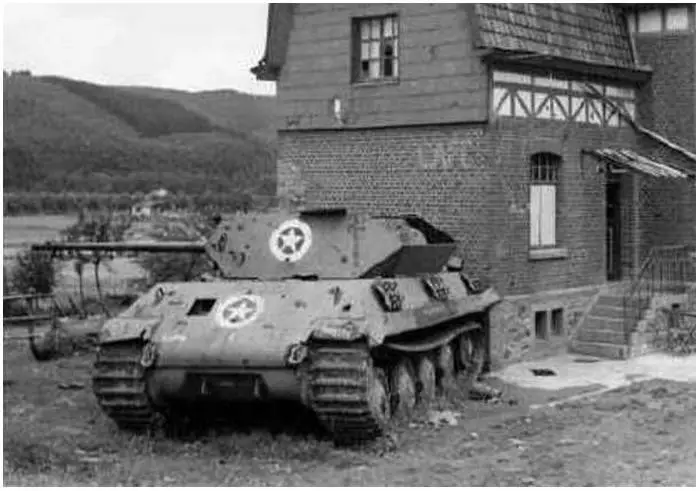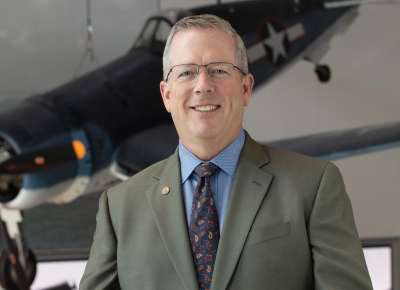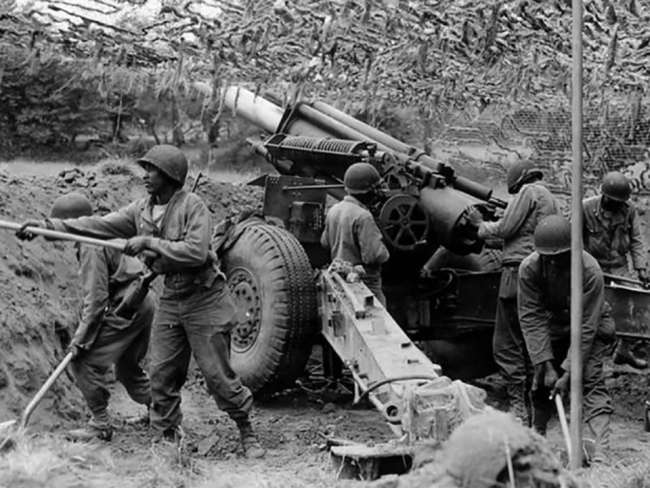Photo: Otto Skorzeny. (1945, February). In Wikipedia.
When developing his strategy for the Ardennes Counteroffensive, Adolf Hitler knew it was essential to capture at least one intact bridge over the Meuse River. Speed was essential to Hitler’s plan, given its ambitious aims of driving a wedge between the US and British armies, crossing the Meuse, and driving to the coast at Antwerp. If the Germans failed to seize an intact bridge over the Meuse, the resulting delay would give the Allies time to recover from their surprise and enable them to amass forces west of the river before the Germans could cross. To avoid this, Hitler entrusted Obersturmbannführer (Lieutenant Colonel) Otto Skorzeny with a special mission known as Operation Greif.
Hitler called Skorzeny to his headquarters in October 1944 to give him his orders in person. Skorzeny had led secret missions for Hitler before, including the rescue of Benito Mussolini, but this would be his largest and most complex. He was to equip and train a unit of commandos that would advance alongside the 6th Panzer Army—the vanguard of the offensive’s northern thrust. In addition to seizing at least one bridge over the Meuse, the commandos would use espionage and sabotage to sow chaos in the Allied rear.
To do this, Skorzeny would rely on deception, employing English-speaking troops in US Army uniforms and equipment. Hitler told Skorzeny that the Allies had used this same ruse in recent battles. He assured his loyal commando that posing as Americans would only violate the laws of war if the German soldiers engaged in combat while disguised.
Skorzeny established his command at Grafenwöhr, Germany. With just six weeks to prepare, he had much work to do. Hitler promised unlimited support, but like most of his claims about the Ardennes Counteroffensive, this was an overstatement that fell flat. Skorzeny received much less American equipment than expected: only a few dozen jeeps, trucks, and halftracks, and one Sherman tank. To make up the difference, he outfitted his main combat force, known as Panzerbrigade 150, with a collection of about 70 German tanks camouflaged to look like American armored vehicles.
In a serious breach of security, German Field Marshal Wilhelm Keitel issued a message seeking English-speaking volunteers from across the Wehrmacht to serve in a special unit commanded by Skorzeny. About 2,000 men responded to this message, which also caught the attention of Allied intelligence officers. Most of the volunteers turned out to know little more than a few words of English. Only 10 were fluent, and a few dozen more could make simple conversation. Skorzeny organized the best English speakers into Einheit Stielau—a reconnaissance element consisting of teams of two to six men, equipped with jeeps, radios, and some demolition equipment. Most of these men had no commando experience, and with only six weeks to prepare, they only had time for rudimentary training.
During their training, a rumor broke out among the commandos that their mission would include the assassination of US General Dwight Eisenhower. Despite Skorzeny’s attempt to quash rumors, this one refused to die. Soon, American intelligence officers had also heard this rumor. Ironically, this led to what was arguably the mission’s greatest success. When the counteroffensive began on December 16, 1944, reports surfaced quickly of German soldiers disguised as Americans, operating behind friendly lines. These reports spread, leading to significant overestimates of the number of commandos involved in the operation, but enough were captured to make the threat seem real and significant. Many of the captured commandos told their captors that assassination squads were hunting senior Allied officers, leading Generals Eisenhower and Bradley to avoid exposure by remaining in their headquarters. This significantly hindered their ability to respond to the German assault.
While the threat to the American generals was never as serious as believed, the commandos of Einheit Stielau were successful in their attempts to sow chaos in the Allied lines. One team portraying themselves as traffic control at a road intersection sent an entire regiment in the wrong direction. Another cut communications between General Bradley’s headquarters and the First US Army command post. While there were far too few commandos to conduct all the actions that were later attributed to them, their acts of sabotage, whether real or imagined, disrupted the Americans’ response to the counteroffensive and weighed heavily on their morale.
The German counteroffensive took the Allies by complete surprise, but it was soon bogged down due to stronger resistance than expected. Skorzeny’s plan for Panzerbrigade 150 depended on a rapid penetration, which would provide an opportunity for his disguised troops to infiltrate the American lines. This was not to be. By the second day of the assault, Skorzeny realized the game was up, and he arranged for the brigade to operate as a conventional unit, attached to the 1st SS Panzer Corps. Skorzeny’s battle came to an abrupt end when he was wounded in the face by artillery near the Hotel du Moulin in Ligneuville, Belgium.
Meanwhile, Skorzeny’s commandos continued the mission, but American troops killed or captured most of them. Only one team returned to German lines. US troops detained three members of Einheit Stielau in Awaille, Belgium, on December 18, 1944: Oberfähnrich (Acting Lieutenant) Günther Billing; Obergefreiter (Corporal) Wilhelm Schmidt; and Unteroffizier (Sergeant) Manfred Pernass. A military commission met on December 21 at First US Army’s Master Interrogation Center in Belgium. The commission arraigned and tried the accused, finding them guilty of two charges: violation of the laws of war (by appearing in American uniforms in the zone of operations); and acting as spies (by gathering intelligence for the enemy while so disguised). The commission recommended the death penalty for all three commandos.
Colonel E. M. Brannon of the Staff Judge Advocate performed the required review of proceedings the next day, upholding the findings of the court-martial. Lieutenant General Courtney Hodges, commander of First US Army, approved and confirmed the sentences that afternoon. The provost marshal carried out the executions the next morning, December 23, 1944.
As for Skorzeny, accountability for his role in Operation Greif did not come until after the end of the war. He surrendered to the 30th Infantry Regiment in May 1945, after which he spent two years in prison awaiting trial. The senior Nazi officers tried by the International Military Tribunal at Nuremburg did not fare well, with most receiving either the death penalty or life in prison. In August 1947, Skorzeny’s trial finally began at the General Military Government Court in Dachau. In his testimony he admitted to his role in the commando operation, but with the help of his skilled US-appointed defense attorney, Colonel Robert Durst, Skorzeny’s account began to sway the court. He pointed out that American troops had worn German uniforms on several occasions, like during the fighting in Aachen, and he insisted that he ordered his commandos to remove their American uniforms before engaging in combat.
Finally, surprise testimony from a Royal Air Force officer, Wing Commander Forest Yeo-Thomas, swayed the court in Skorzeny’s favor. Yeo-Thomas, a British agent known to the Germans as "The White Rabbit," described how he had escaped German captivity by disguising himself and several fellow prisoners in enemy uniforms. He argued that this was no different from Skorzeny’s use of American uniforms to disguise his commandos. Unlike the military commission that convicted Schmidt, Billings, and Pernass, the court at Dachau operated on the basis of international laws of war, which only considered wearing enemy uniforms a war crime if the accused engaged in combat while so disguised. Based on this legal interpretation, and with the compelling testimony of Yeo-Thomas, the court dropped the charges against Skorzeny and his co-defendants.
Skorzeny remained in prison awaiting the decision of a denazification court until July 1948, when he escaped with the help of three former SS officers dressed in US military police uniforms. He maintained thereafter that he escaped with US assistance. In 1952, Skorzeny was living in Spain when a former German general with connections to the CIA recruited him to train the Egyptian army. He later lived in Argentina, where he was rumored to be adviser to President Juan Perón and bodyguard to his wife. In the 1960s, he was recruited by the Mossad, although his motivations for collaborating with the Israelis and the missions he performed remain matters of speculation. He died of lung cancer in January 1975, and was cremated after his funeral in Madrid. His ashes were flown to his native Vienna, where former SS officers attended his memorial service. He remains a subject of controversy, seen by some as an unabashed racist and war criminal, while admired by others as a courageous adventurer and pioneer of commando tactics.
Mark T. Calhoun, PhD
Mark T. Calhoun, PhD, is a former Senior Historian at the Jenny Craig Institute for the Study of War and Democracy.
Cite this article:
MLA Citation:
APA Citation:
Chicago Style Citation:










![Max Fuchs, New York City cantor, sings as Rabbi Sydney [sic] Lefkowitz, Richmond, VA, conducts the first Jewish services from Germany.](/sites/default/files/styles/max_650x650/public/2025-10/image1.jpg)



